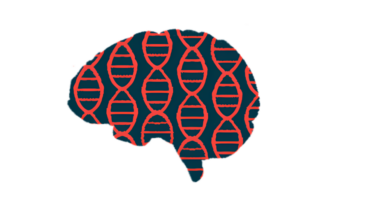SYK Protein Needed for Microglial Cells to Clear Molecular Debris
Suppressing SYK increased inflammatory T-cells in brains of a mouse model

A protein called spleen tyrosine kinase (SYK) is critical for microglia, the brain’s immune cells, to clear the toxic debris that accumulates in multiple sclerosis (MS) and other neurological disorders, a mouse model study shows.
“We have discovered a master controller of the cell type and processes that are required to protect the brain from these disorders,” John Lukens, PhD, the study’s senior author with the University of Virginia (UVA)’s Center for Brain Immunology and Glia, Carter Immunology Center, and Brain Institute, said in a university news release. “Our work further shows that targeting this novel pathway provides a potent strategy to eliminate the toxic culprits that cause memory loss and impaired motor control in neurodegenerative disease.”
The study, “SYK coordinates neuroprotective microglial responses in neurodegenerative disease,” was published in Cell.
Microglia are resident immune cells in the central nervous system (CNS; the brain and spinal cord) that normally protect these tissues from harmful invaders, such as bacteria, by engulfing them.
This process, called phagocytosis, also is used by microglial cells to clear and break down the remains of dead and damaged cells, which is essential for maintaining balance in the CNS.
Since evidence suggests microglia become impaired in MS and other neurodegenerative disorders, understanding the molecular mechanisms of their clearing processes may help identify new potential therapeutic targets and approaches.
Lukens and his research team investigated whether the SYK protein, whose production is increased in microglia surrounding neurotoxic material, regulates microglia’s phagocytosis in neurodegenerative diseases. SYK is mostly known for its role in promoting antifungal immune responses.
The researchers evaluated the effects of genetically deleting the gene coding for SYK in microglia of mouse models of MS and Alzheimer’s disease.
MS is caused by abnormal inflammation and immune attacks that progressively damage a fatty wrapping around nerve fibers called the myelin sheath. Previous preclinical studies showed restoring microglia’s ability to clear debris from damaged myelin is a promising therapeutic approach for MS.
The researchers found that suppressing SYK in microglia significantly increased the number of inflammatory T-cells, a type of immune cell implicated in MS, in the mice’s brains. Levels of several pro-inflammatory signaling molecules such as interferon-gamma and interleukin-17 were also significantly higher without SYK.
The microglia of mice with an MS-like disease showed changes in gene activity that suggested a disease state, being enriched in genes associated with phagocytosis. This state has been suggested previously as helping them detect and respond to neurodegeneration cues. These changes were blunted in cells lacking SYK.
Further experiments in mice exposed to cuprizone, a chemical that causes myelin damage, showed there was greater accumulation of myelin debris in animals lacking SYK in their microglia.
This was associated with signs of an impaired phagocytic microglial response. A deficient clearance of myelin debris also reduced the growth of oligodendrocytes, myelin-producing cells whose function is affected by its accumulation.
“These results provide evidence that SYK signaling in microglia is critically involved in the clearance of myelin debris,” thereby having “key neuroprotective roles … during demyelinating neuroinflammatory disease,” the researchers wrote. Demyelination refers to the loss of myelin.
Findings in a mouse model of Alzheimer’s, a feature of which is the abnormal buildup of toxic protein clumps called amyloid-beta plaques, also supported SYK’s neuroprotective effects.
Mice with Alzheimer’s-like disease and SYK-deficient microglia had more amyloid-beta plaques and worse memory impairment.
SYK was also found to be necessary for microglia to properly activate and clear amyloid-beta plaques via phagocytosis. Increasing SYK activation led to increased plaque clearance.
“These findings are especially exciting because they point to a treatment avenue in which we could alter the behavior of these native brain cells, microglia, to behave in a more neuroprotective way,” Coco Holliday, an undergraduate researcher at Lukens’ lab and one of the study’s authors, said. “It could potentially be applied to a variety of different neurological diseases that all share the problem of a buildup of toxic waste in the brain.”
The researchers proposed that targeting SYK to promote the clearance of debris may be a viable MS therapeutic strategy and could be an alternative to existing treatments which broadly work by dampening immune activity.
“If boosting SYK activity in microglia can decrease the amount of myelin debris in MS lesions, developing new drugs to target SYK could stop the progression of MS and help to reverse the damage,” Elizabeth Frost, PhD, one of the study’s authors, said. “Targeting SYK in microglia would circumvent multiple limitations of present-day therapeutics for MS.”







